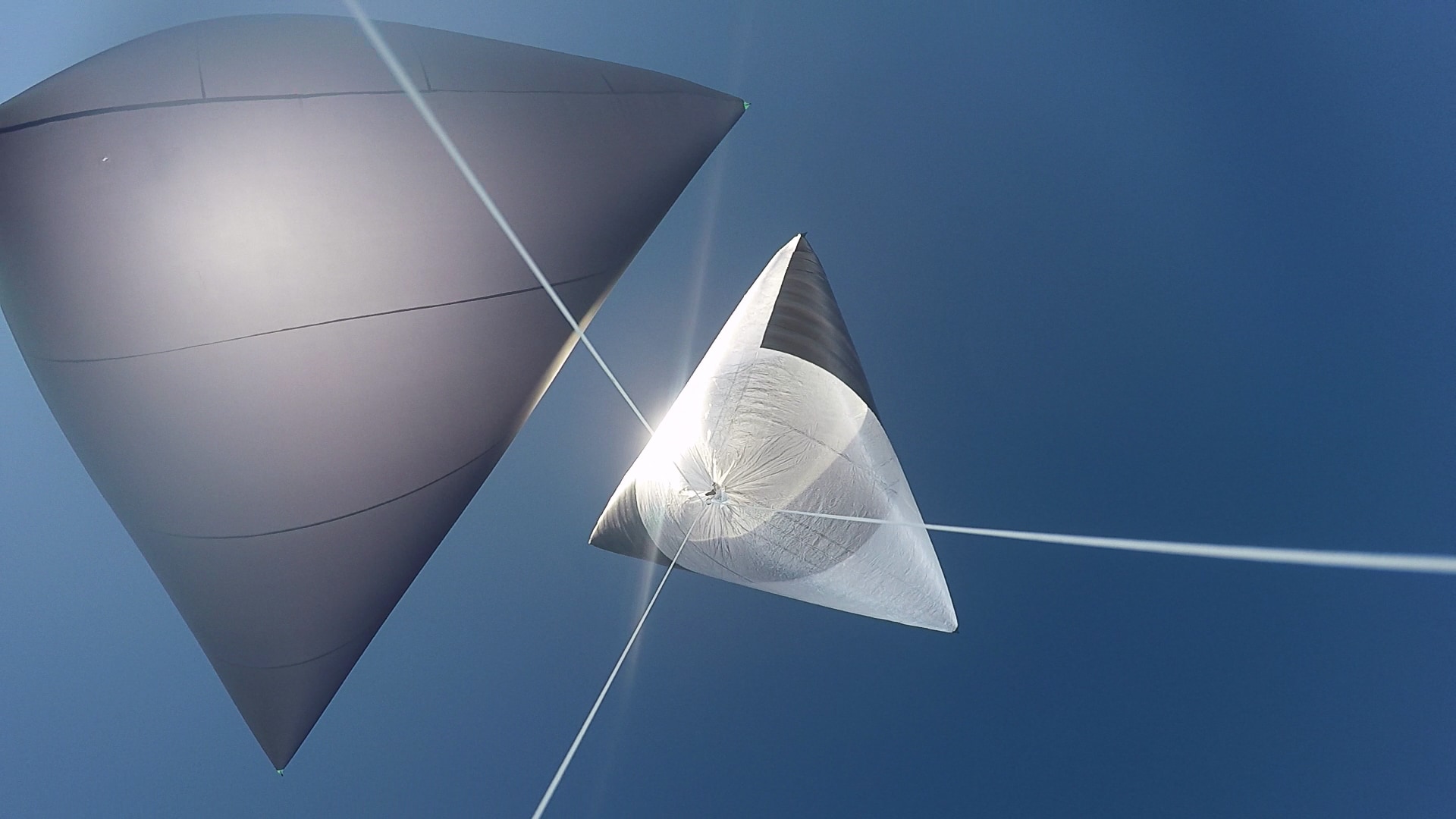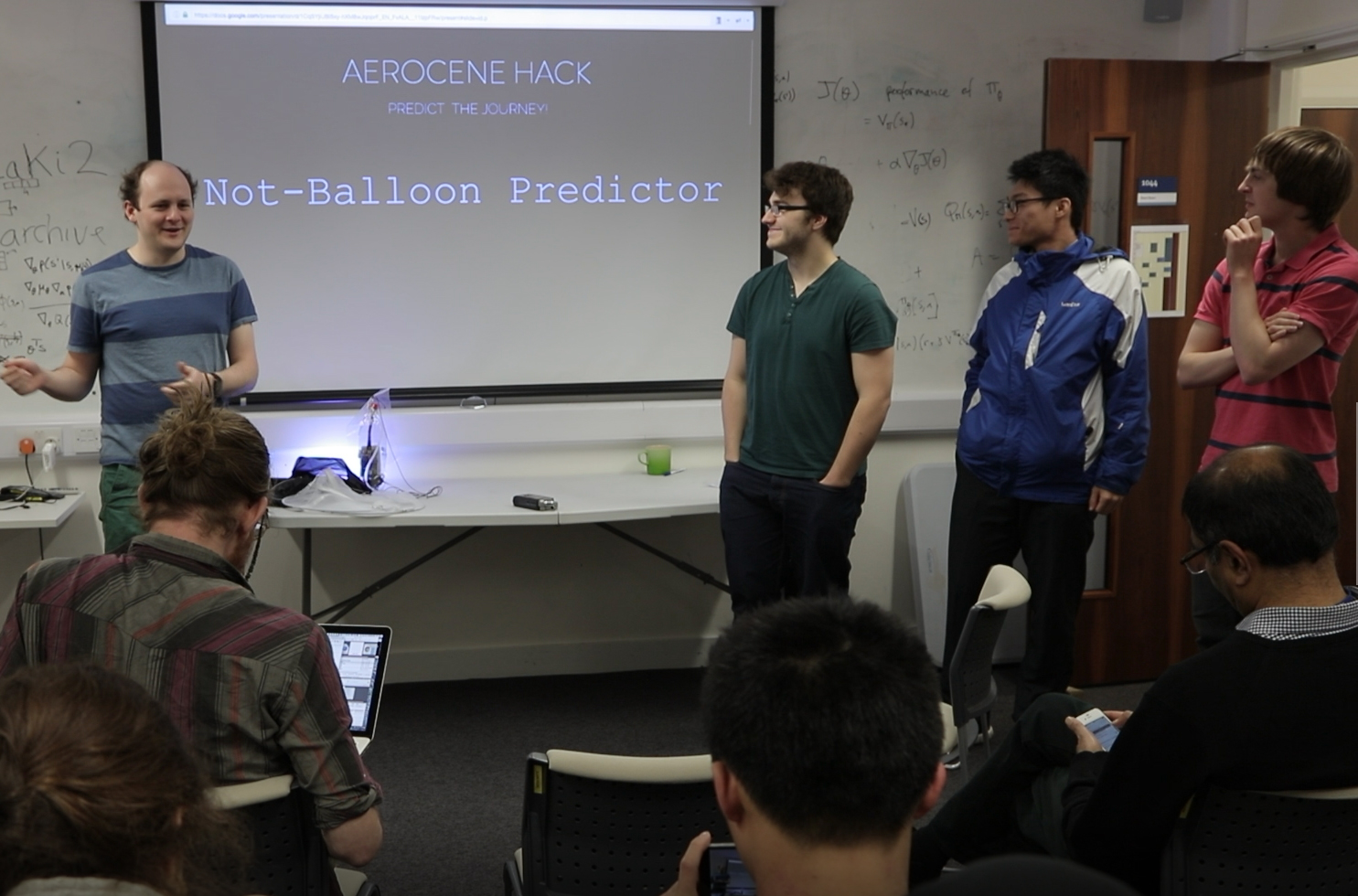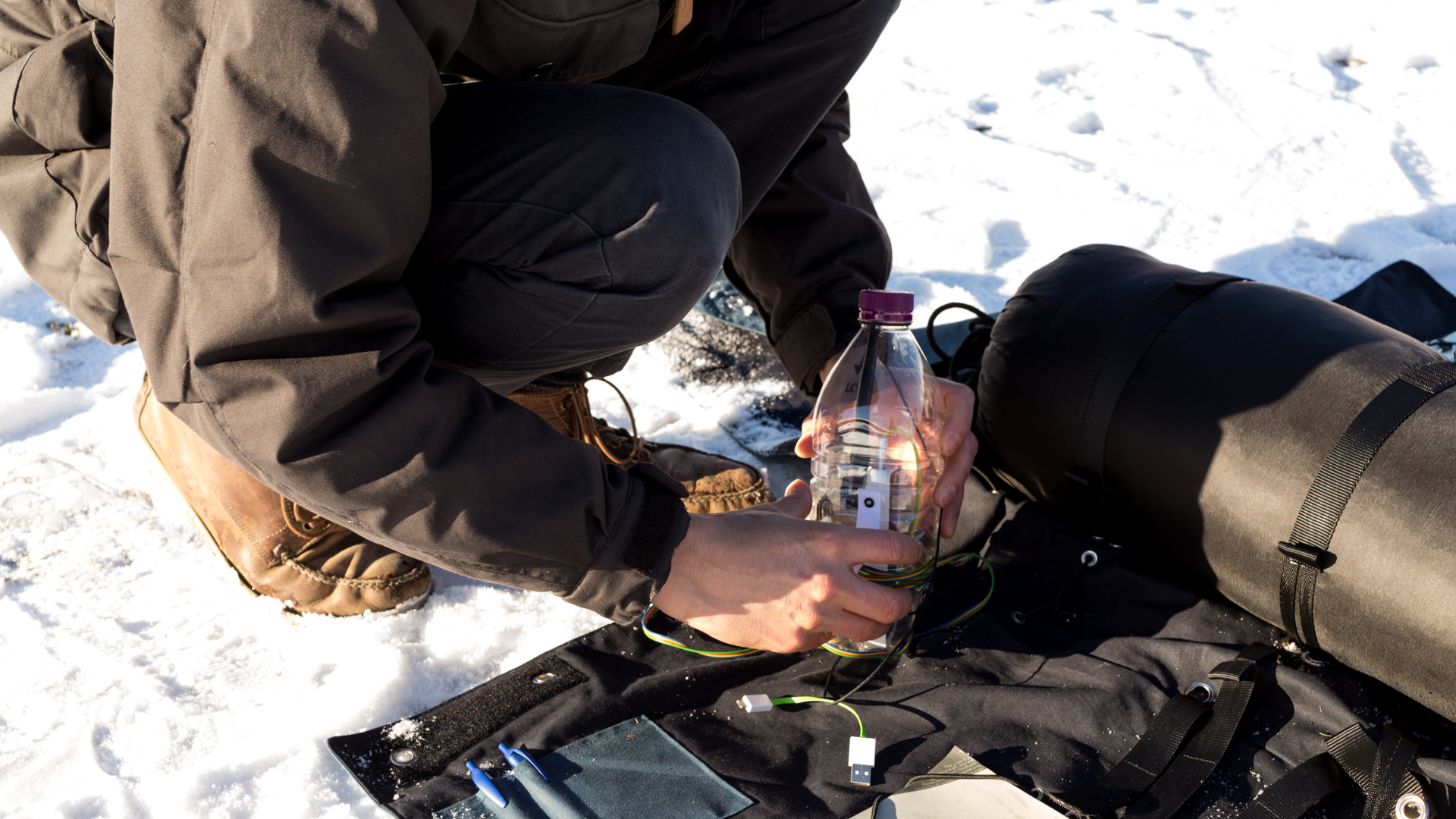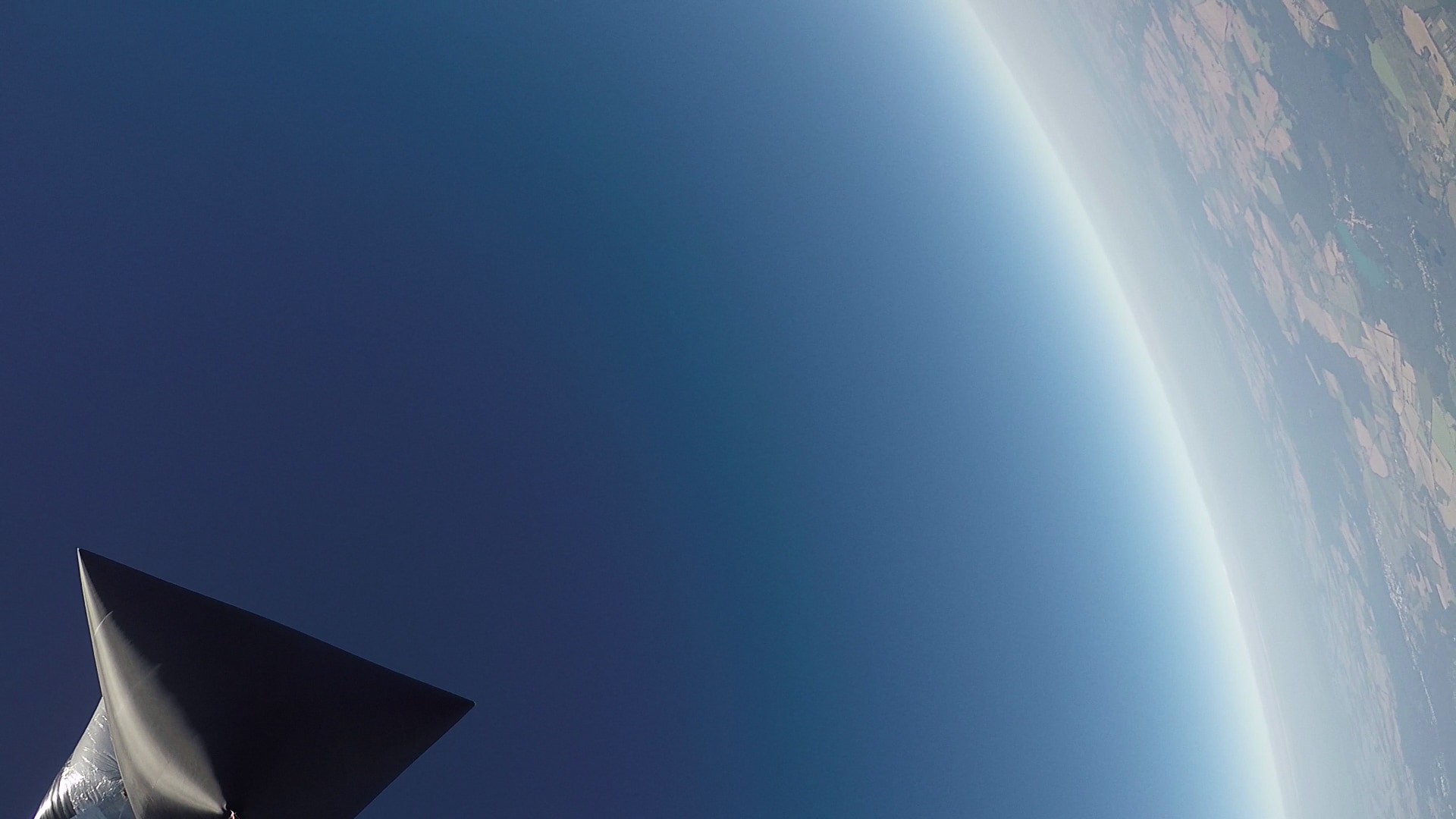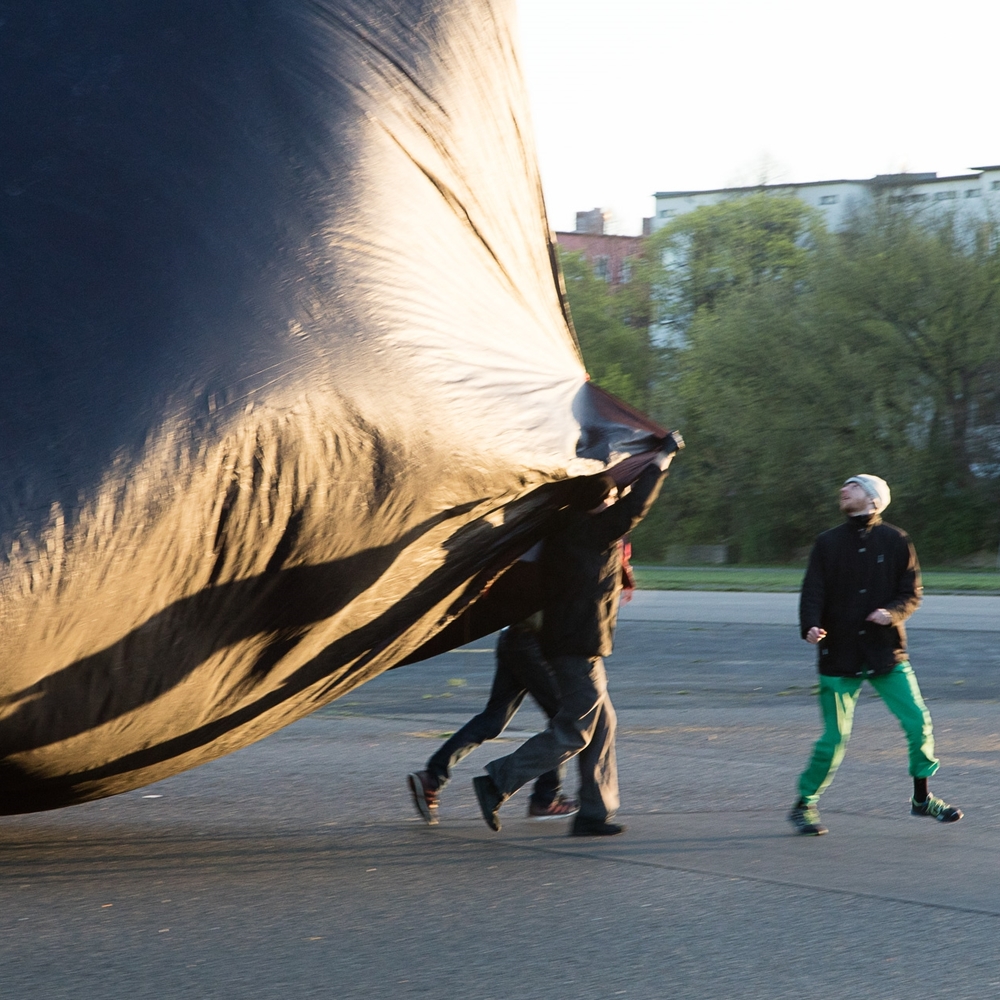Aerocene at Exhibition Road, London
Through October to December 2016, Aerocene comes to the Exhibition Road for an interdisciplinary artistic project co-produced by the members of the Exhibition Road Cultural Group, gathering together 16 prestigious cultural and scientific institutions in London, among them the The Serpentine Galleries, Imperial College London, The Natural History Museum, and The Royal College of Art. For this occasion, Aerocene creates an collaborative research platform between Exhibition Road members and wider communities.
“Aerocene is to imagine a metabolic and thermodynamic transformation of human societies’ relation with both the Earth and the Sun. It is an invitation to think of new ways to move and sense and live with the circulation of energy. And, it is a scalable process to repattern atmospheric dwelling and politics through open source ecology of practices, models, data and sensitivity to the more than human world. The Aerocene proposes airborne cities floating among clouds, just as the Earth floats in the cosmic plane.” Adaptation from Saraceno, Engelmann and Szerszynski, (2015: 59).*
Programme
26th November
Aerocene Campus
http://aerocene.org/aerocene-campus
26th-27th November
Aerocene HACK 2 – open call
http://aerocene.org/aerocene-hack2
29-30th October
Aerocene HACK – open call
http://aerocene.org/aerocene-open-call-exhibition-road
28th October
Aerocene at the Natural History Museum Lates
http://www.nhm.ac.uk/visit/whats-on/programs/nhm/discovery_lates.html?date=28.10.2016
8-10th October
Serpentine Miracle Marathon
http://radio.serpentinegalleries.org/2016/10/04/tomas-saraceno/
An invitation to explore the Aerocene Epoch / Hacking the Aerocene Explorer at Exhibition Road
The air is full of species that have helped ecologists understand and detect the climatic changes we see today. Through diverse investigations in aerial life, Aerocene inspires novel inquiries, collaborations and data sets animated by sharing across artistic and scientific practices.
Here we share the topics and ideas that have arisen through conversations with pioneering experts in the field: we get to know the people who will speculate the possibilities of Aerocene research, and make relevant contributions to debates on metabolic and environmental futures.
The practices of recording and monitoring life in the air are faced with significant challenges in physical limitations of technology and scientific sampling. With Aerocene Explorer’s unique possibilities, the trajectories of sampling journeys could be traced with flight predictors at a variety of previously unreachable locations via emission-free journeys.
Areocene on new methods of sampling techniques to support the study of diversity in the air
AEROCENE AND COSMIC DUST
One of the oldest collections in the world, the Natural History Museum holds almost 5,000 specimens, many of which were seen to fall to Earth. Such objects have incredibly unusual and interesting patterns that convey the forces they underwent on their asteroid parent body,while passing through space and on entering our atmosphere. The class of extraterrestrial material known as “micrometeorites” offers the opportunity to study “Cosmic Dust” as such matter falls on Earth in an immense quantity each day. Equipped with proper capturing devices, Aerocene sculptures could be employed as collectors of such cosmic material. Such research could lead towards questions not only about Life in the Air, but Life in the Cosmos, placing human and Earth-bound endeavours in a much larger cosmic scale. Aerocene’s possible collaboration with collecting meteoritic material came about through a conversation with Natasha Almeida, Assistant Curator ofMeteorites at the Natural History Museum.
AEROCENE AND SAMPLING OF AIRBORNE LICHEN FORMING FUNGI
How quickly can we expect the re-colonisation of the rainforest? This remarkable and yet unanswered question is put forward through a discussion between Aerocene & the Natural History Museum. Through sampling and recording lichens in the Borneo air, the Aerocene Explorer could help to predict the chances and times scales of the recovery of the Borneo rainforest. With uncertainties in the long term role of palm oil plantations in SE Asian economies, and the possibility of changing land uses, our ongoing conversations unpacked the thinking around Areocene Explorer’s first lichen sampling mission to monitor the air above the island of Borneo. This idea emerged in conversation with scientists at the LS Division of Diversity and Informatics, Natural History Museum.
AEROCENE AND BIOSTRATIGRAPHY, POLLEN
Aerocene is speculating on what kinds of questions might we ask of the principles of biostratigraphy and the associated study of microfossils in order to understand (and in turn, create) more equitable and sustainable futures. In other words, what are the traces in the fossil record that have the potential to create the narratives and imaginaries of alternative futures – those that shift our planet out of the Anthropocene and into the Aerocene? In considering Exhibition Road as a location with a long and complex natural and anthropogenic history, Aerocene is developing further research on the biota that inhabit the Road – especially the London Plane Trees whose pollen grains are rather small (20-30 microns in diameter) and under-studied yet who tower above visitors of the Natural History Museum. Taking cues from pollen and spores, Aerocene is interested in the factors of materiality and morphology that are most ideal for floating in space. Many of these trajectories emerged in a conversation with Dr. Thomas Hill, a micropalaeontologist who specialises in the analysis of Quaternary sedimentary archives in order to reconstruct past environmental conditions. He undertakes the application of diatom and pollen analysis to sedimentary sequences in order to reconstruct past sea level and vegetation change.
AEROCENE AND THE GEOHUMANITIES
What is the meaning of geographical exploration today? How can exploratory journeys become sensitive to the physical and spatial as well as humanistic and creative expressions of our planet and its cultures? In the context of these questions, Aerocene finds resonances with the important new momentum toward GeoHumanities scholarship and research in human and cultural geography. There are specific invitations to working across disciplinary and practice-oriented fields embedded in the Aerocene and articulated in the GeoHumanities. The Aerocene residency period on Exhibition Road is an opportunity to test and intensify these qualities in the project, especially to the extent that they can foster new communities, publics and politics on Exhibition Road and beyond. The interstices between Aerocene and GeoHumanities discourse were fostered by an exciting working session with Dr. Harriet Hawkins, Co-Director of the Centre for GeoHumanities at Royal Holloway University.
AEROCENE AND THE WORLDWIDE SAMPLING OF MICROBES
Aerocene is inspired to create a campaign for the worldwide engagement of citizens to simultaneously sample microbes in the air. In such an event, dozens of fossil-fuel-free Aerocene Explorers could be launched at various sites across the planet by communities and residents at a specific moment in time. Through eDNA assessments and sequencing technologies, Aerocene Explorers’ cumulative samples, connected by space, environmental parameters, and citizens of the world, could provide fundamental insights into microbial diversity in the air on a previously unattainable global scale. This speculative campaign evolved through a rich conversation with Dr Anne Jungblut, Researcher, Life Sciences Department, LS Division of Diversity and Informatics, Natural History Museum.
This is a live stream feed of information: it is continually being updated in reaction to every conversation we have with each researcher, so please check back to see more experts added to the list.
Aerocene Intervention, Lates at the Natural History Museum
Aerocene at the Attenborough Studio exploring and discussing more about the project.
Aerocene HACK…begins!
Aercocene has been working with developers, designers, artists, data scientists and creative technologists from Imperial College London and the Royal College of Art. Participants imagined and prototyped innovative user scenarios for Aerocene flights, including mashups with other data sources.
And more to be announced!
Do you have an idea for the Aerocene community? Help us shape our Aerocene future together! Anyone can take part and actively contribute to our research to help us find out what we know about life in the air — and what we don’t know — with your own ideas and imagination! Click here to start brainstorming with us.
—
*The ideas and text in this passage come from the exchange between Bronislaw Szerszynski, Sasha Engelmann and Tomás Saraceno in: Saraceno, T., Engelmann, S., and Szerszynski, B. (2015). Becoming Aerosolar: Solar Sculptures to Cloud Cities in H. Davis and E. Turpin (Eds.), Art in the Anthropocene: Encounters Among Aesthetics, Politics, Environments and Epistemologies (pp. 57-62). London: Open Humanities Press.
Aerocene’s residency at the Goethe-Institut London as part of the Exhibition Road Commission has been made possible thanks to the support of members of the Exhibition Road Cultural Group, Arts Council England, South Kensington Estates and our Founding Patrons: Francesca von Habsburg, Maja Hoffmann and Nicoletta Fiorucci.
